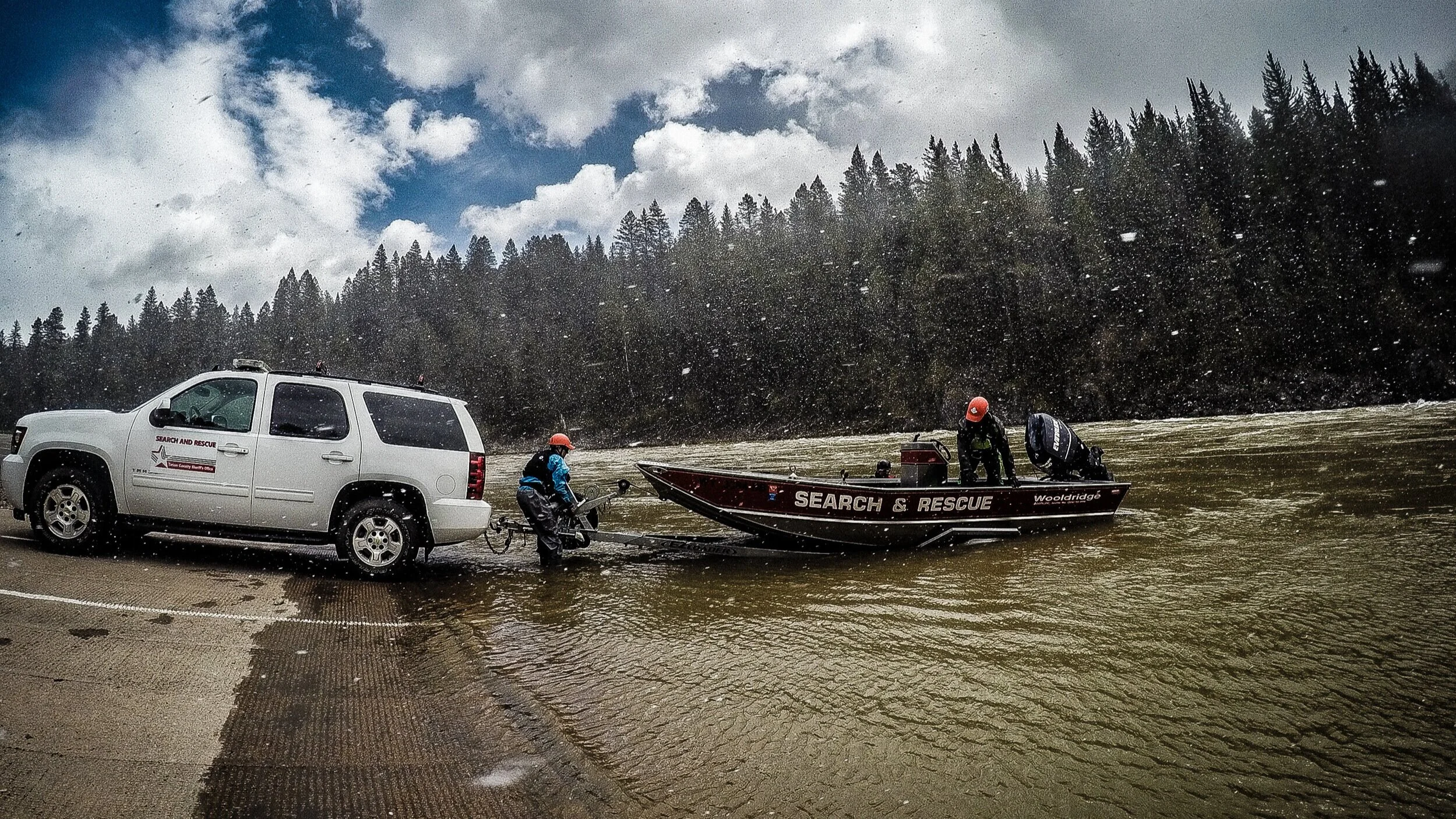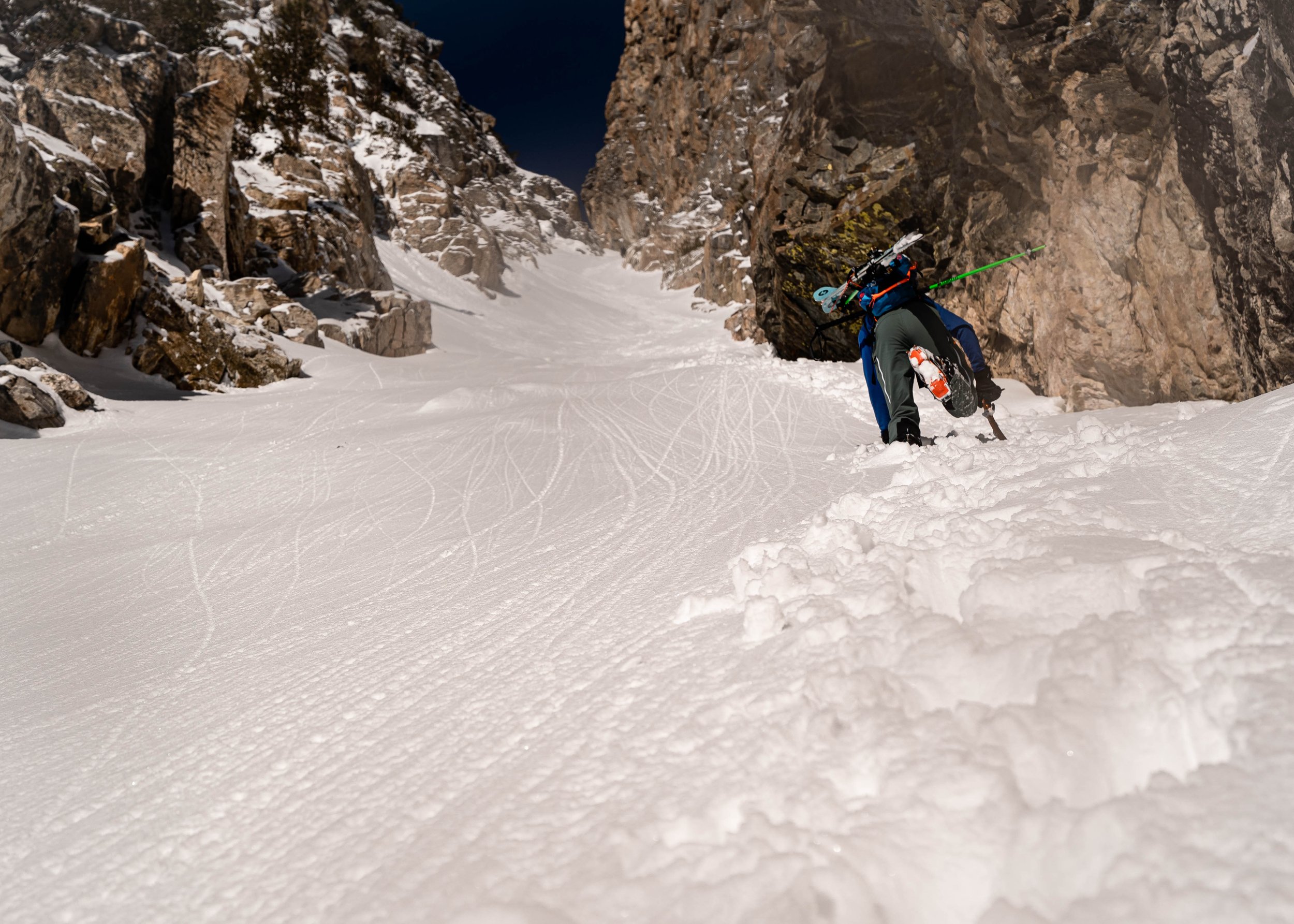While many Jackson Hole locals flocked to the Tetons for a day of powder skiing on February 15, 2020, Teton County Search & Rescue volunteers loaded up their heavy packs for a routine day of training on Snow King Mountain.
But the training session quickly turned into anything but routine when longtime TCSAR volunteer Robb Sgroi came down with a rare and severe form of anaphylaxis. The ordeal comes into focus in the next episode of The Fine Line, a podcast from TCSAR Foundation that seeks to raise awareness about backcountry safety and issues affecting first responders.
Most people associate anaphylaxis with bee stings, which of course is not possible in Jackson Hole in the middle of February. Anaphylaxis can also be brought on by food allergies that kick someone’s immune response into overdrive and thereby shut down vital organs. But that’s not what happened here, either.
Robb Sgroi with his wife, Krista, and their daughter, Savannah. Photo: David Bowers
So how did Sgroi—a tall, lean husband and father—end up itchy, on the ground, and spiraling into unconsciousness?
In this episode of The Fine Line, TCSAR volunteers Sgroi, Chase Lockhart and Dr. Will Smith relive this scary incident, and walk us through how to diagnose and treat anaphylaxis, no matter the time of year.
Thank you to Roadhouse Brewing Co. for the generous sponsorship of The Fine Line. We are also grateful to KHOL 89.1 FM for the use of their studio.
This episode airs at 2 p.m. on March 17 on KHOL 89.1 FM, and will be available afterward wherever you get your podcasts.







